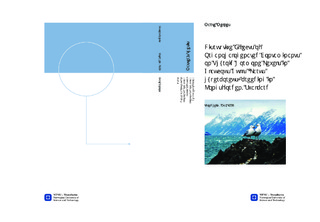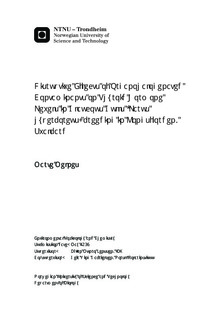| dc.contributor.advisor | Jenssen, Bjørn Munro | nb_NO |
| dc.contributor.advisor | Wing Gabrielsen, Geir | nb_NO |
| dc.contributor.author | Melnes, Marte | nb_NO |
| dc.date.accessioned | 2014-12-19T13:13:36Z | |
| dc.date.available | 2014-12-19T13:13:36Z | |
| dc.date.created | 2014-07-10 | nb_NO |
| dc.date.issued | 2014 | nb_NO |
| dc.identifier | 733650 | nb_NO |
| dc.identifier | ntnudaim:8743 | nb_NO |
| dc.identifier.uri | http://hdl.handle.net/11250/245431 | |
| dc.description.abstract | The glaucous gull (Larus hyperboreus) is a predator and scavenger occupying an upper position in the arctic marine food web. This species is exposed to high levels of a variety of anthropogenic pollutants thought to cause adverse health effects. Organohalogenated contaminants are possible endocrine disruptors, suggested to interfere with the thyroid hormone system among others. The purpose of this project was to evaluate the possible effects of the cocktail of OHCs to which glaucous gulls are exposed to on circulating thyroid hormone levels. Blood from male and female glaucous gulls were sampled during the incubation periods of 2011, 2012 and 2013 in Kongsfjorden, Svalbard in the Norwegian Arctic. The plasma was analyzed for a variety of organohalogenated contaminants, including polychlorinated biphenyls (PCBs), persistent organochlorinated pesticides (OCPs), brominated flame retardants such as polybrominated diphenyl ethers (PBDEs) as well as perfluorinated alkylated substances (PFASs). Total and unbound fractions of thyroid hormones were quantified. Multivariate data analysis was conducted to evaluate associations between contaminants and thyroid hormones. Highly chlorinated PCBs, some persistent OCPs and the emerging perfluorooctane sulfonate (PFOS) were the compounds detected at the highest levels in the present study. Females seemed to be more susceptible to disruptive effects of organohalogenated contaminants on thyroid hormone levels than male glaucous gulls. The prevailing contaminants detected were also the ones shown to significantly alter free fractions of both T3 and T4 in female glaucous gulls. The results from the present study demonstrate complex combined effects on TH levels from the environmental mixtures of halogenated organic contaminants to which glaucous gulls are exposed to in the Arctic. | nb_NO |
| dc.language | eng | nb_NO |
| dc.publisher | Institutt for biologi | nb_NO |
| dc.title | Disruptive Effects of Organohalogenated Contaminants on Thyroid Hormone Levels in Glaucous Gulls (Larus hyperboreus) breeding in Kongsfjorden, Svalbard | nb_NO |
| dc.type | Master thesis | nb_NO |
| dc.source.pagenumber | 85 | nb_NO |
| dc.contributor.department | Norges teknisk-naturvitenskapelige universitet, Fakultet for naturvitenskap og teknologi, Institutt for biologi | nb_NO |

